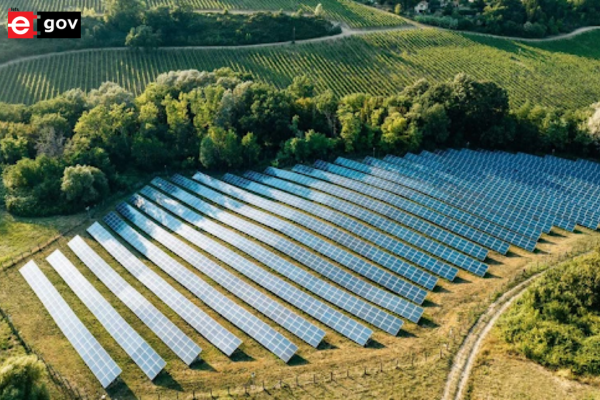
Batteries, the silent engines that power our digital age, are at the crossroads of sustainability. With global demand for lithium-ion batteries expected to grow from 280 GWh in 2021 to 2,500 GWh by 2030, the environmental effects of accumulating battery waste become increasingly significant.
The Rising Tide of Battery Waste: An Environmental Conundrum
The increased use of batteries, from gadgets to electric vehicles, has produced an ecological quandary.

According to the International Energy Agency, just 5% of lithium-ion batteries are now recycled globally. The recycling rate for lithium-ion batteries lags well behind that of other types of e-waste, underlining the critical need for transformative solutions.
The difficulty stems from the complexities of recycling procedures as well as inadequate infrastructure. Traditional disposal methods, such as landfilling and incineration, endanger the environment by emitting greenhouse gases and damaging soil, water, and air. With its three-step process, technologies like Hybrid HydrometallurgyTM deliver a remarkable recovery of precious materials such as Lithium, Nickel, and Cobalt, while reducing environmental impact and contributing to the circular economy.

Circular Economy: A Beacon of Hope
Enter the Circular Economy, a ray of hope in the fight for environmental sustainability. Innovative battery recycling technologies are in sync with the concepts of the Circular Economy. This paradigm focuses on reducing waste, conserving resources, and achieving both sustainability and economic prosperity. The Circular Economy is a worldwide imperative, not just a local requirement. By recovering materials efficiently, Hydrometallurgy adheres to circular principles. The technique yields recovered minerals with greater than 99% purity, ensuring that lithium, cobalt, nickel, and manganese can be smoothly reintegrated into the construction of new batteries, decreasing the requirement for raw material extraction. Circular methods can help to reduce the environmental impact of batteries on a global basis.

The Odyssey of Battery Recycling: From Collection to Reintegration
The battery recycling process begins with meticulous collection, facilitated by government programs such as Extended Producer Responsibility (EPR). EPR places the duty for battery waste collection squarely on the shoulders of Original Equipment Manufacturers (OEMs). Following disassembly, patented discharge technologies and machinery design are used to streamline the process efficiently and environmentally responsibly. Extended Producer Responsibility regulations, for example, are critical in developing a streamlined and environmentally sound reverse supply chain for battery recycling.
EPR initiatives, in conjunction with Hydrometallurgy, improve battery recycling efficiency. With the country producing 70,000 metric tonnes of discarded lithium-ion batteries each year, this process becomes critical.
Advanced Recycling Technologies: A Technological Marvel
Patented sophisticated recycling processes are at the heart of the innovation. Mechanical and chemical operations, such as selective elemental separation and beneficiation for purification, are used in these methods. As a result, a zero-liquid discharge technology has been developed, revolutionising lithium-ion battery recycling. The recovered materials, which have a purity of greater than 99%, can be effortlessly reintegrated into the construction of new batteries.
Advanced recycling techniques such as Hybrid Hydrometallurgy not only boost efficiency but also solve environmental concerns, such as the production of PM2.5 and PM10. This process excels at preserving the structural and chemical properties of precious materials such as spherical graphite. The technology demonstrates economic viability while ensuring that recovered materials can be reused in numerous applications, including sodium-ion battery factories, with stated cost reductions of 50 to 53% compared to existing approaches.
Battery Recycling Technology: A Sustainability Catalyst
Battery recycling technology is more than just a solution to environmental concerns; it is a driving force behind a more sustainable future. Manufacturers are being urged by innovations to develop items with recyclability at the forefront. It’s not just about preserving resources; it’s about increasing material recoverability and thus increasing the attraction of the circular business model. Manufacturers should prioritise the development of sustainable battery technologies to ensure seamless integration into the circular economy.
As the globe grapples with the environmental effects of excessive battery consumption, new battery recycling technologies shine as a ray of light. Efficient processes, zero-liquid discharge, and environmental benefits give a clear picture of what sustainable battery recycling can accomplish. Although challenges remain, teamwork, technological improvements, and a collective commitment to a Circular Economy can pave the way for a future in which batteries power progress without harming the environment.
Views expressed by: Arvind Bhardwaj, Founding Director, MiniMines Cleantech Solutions Pvt Ltd
Be a part of Elets Collaborative Initiatives. Join Us for Upcoming Events and explore business opportunities. Like us on Facebook , connect with us on LinkedIn and follow us on Twitter, Instagram.
"Exciting news! Elets technomedia is now on WhatsApp Channels Subscribe today by clicking the link and stay updated with the latest insights!" Click here!













